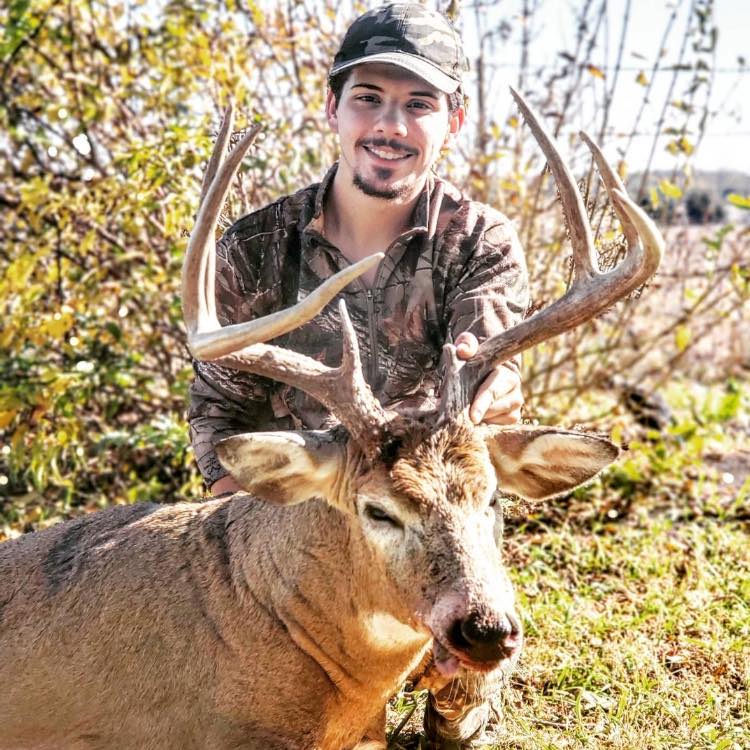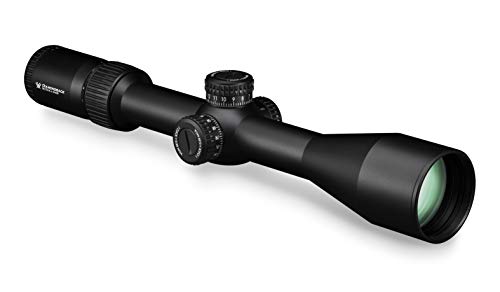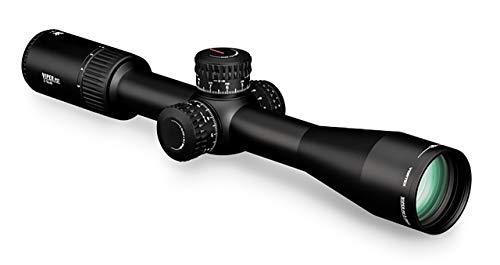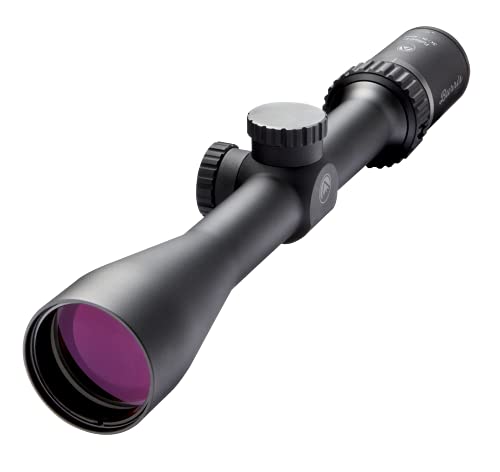Terminal ballistic, moderate recoil, consistency, and availability; are some of the many features that make the .270 Winchester a favorite of many. In ideal conditions, this round is accurate up to 350 yards.
Nonetheless, pairing it with a scope will give you a better chance of hitting the target. To improve your odds even further, you will want the best scope for .270 rifles. To help with your search, I have compiled a list of ten of the best.
I picked these from a list of 30+ scopes that I tested and have worked with. I have also included a list of features to consider when shopping for the best scope for .270 Winchester.
A Quick Comparison Between Our Top Picks
Last update on 2024-04-26 / Please note that Prices and Availability Are Subject To Change /Paid links / Images from Amazon Product Advertising API
Last update on 2024-04-26 / Please note that Prices and Availability Are Subject To Change /Paid links / Images from Amazon Product Advertising API
Why trust this review
As a hunter and gun enthusiast with close to 7 years in the business, I have used a wide variety of riflescopes. And the ones I have selected are based on my own personal experiences with each of them over the years.
Reviews Of The Best Rifle Scope For Winchester 270
Vortex Optics Crossfire II Second Focal Plane 1-inch Tube 3-9X50 riflescope
The Crossfire II series of riflescopes comprises Vortex’s entry-level offerings. The models in this series are available in four different magnification variants. The smallest is the 2-7X32 variant, with the biggest being the 4-12×44.
In between are two other variants, the 3-9x50mm, and the 3-9x40mmm variants. For purposes of this review, I picked the 3-9×50 option. In my opinion, this version offers the right balance of magnification, field of view, and objective lens.
When it comes to the reticle, there are three different types: the v-Brite, v-plex, and a BDC option. The model I am reviewing is the v-brite option, which has an illuminated reticle. The inclusion of illumination is the main difference between it and the duplex-style V-plex reticle.
This makes the V-brite option the best for hunting in low-light conditions, which is why I picked it over the other reticle variants.
While its eye relief is under 4 inches, at 3.8 inches, it is still one of the longest in the budget category, so I have no complaints about it. As for the field of view stands at 32 to 12.9 ft at 100 yards, which puts it ahead of the 4-12×44 variant.
In fact, this model has one of the widest fields of view in its series and price segment. And with its one-tube construction, it is tough enough to survive the occasional knocks and bumps. As for its construction, it is made from aircraft-grade aluminum.
One of the surprises I got with this scope is its fully multi-coated optics. Not many scopes in an affordable price range feature fully multi-coated optics. As such, you can expect better light transmission and minimal glare from this model.
It isn’t the biggest in terms of size, measuring 12.8 inches long and weighing 18.04 ounces. The single adjustable low-profile turrets have a zero-reset feature. I have this installed on my Winchester Model 70 Featherweight and was pleased with how well the turrets hold zero.
However, I wasn’t pleased with the image quality on high magnification. The image quality tends to become distorted as you increase the magnification range.
Leupold VX-3i 4.5-14x50mm Riflescope
Compared to most of the other entries on my list, the Leupold VX-3i 4.5-14x50mm riflescope is lightweight and compact. And the best part is that Leupold has managed to cram an excellent optical system in such a small package.
My first impression of this scope is that it is built really well and has an elegant matte finish to go with its tough construction. I particularly love the gold ring that wraps around the objective lens, giving it an elegant look.
The 30 mm tube of the scope is made from aircraft-grade aluminum. But this scope isn’t just an elegant design as it matches its elegant design with high-quality optical performance.
Leupold decided to go with a unique lens coating. Codenamed the Twilight Max Light Management System, the latter improves light transmission in particular blue and red lights. The result is better performance in low light such as at dawn or dusk.
This makes this Leupold scope a perfect option for big game hunters as most animals such as mules and whitetail are active either at dawn or dusk. The outer lens surfaces have a lens diamond coating.
This coating protects the lens surfaces from abrasion and also improves light transmission. For improved long-range shooting accuracy, this scope incorporates Leupold’s custom dial system for the turrets.
This system, which is unique to Leupold, offers elevation and windage adjustment with 5 MOA with a single rotation. As for the field of view is quite decent and is better than what you get from the Crossfire II 6-24x50mm scope.
The field of view ranges from 20.5 to 7.7, which is quite decent for a scope with a high magnification range. The eye relief is what makes this unit stand out. At 4.4 inches maximum, it is one of the longest.
The DUPLEX reticle on the scope is in keeping with its long-range shooting capabilities. The thick lines that become thinner towards the center stand out in low light. And given that it’s a second focal plane, it remains of the same size regardless of the magnification range.
While there was a lot I loved about this scope, there are a few things that I did not like—top among them the turrets. You see, the elevation knob doesn’t rise as you adjust. This makes it difficult to know how many revolutions you have dialed in.
Vortex Optics Crossfire II Adjustable Objective, Second Focal Plane 6-24×50 scope
One of the biggest offerings from Vortex’s Crossfire II series is the 6-24x50mm riflescope. So how does it compare to the smaller 3-9x50mm variant?
As you would expect, you get a smaller field of view in this one compared to what you get with the 3-9x50mm model. At 17.3 to 4.4ft at 100 yards, the field of view on this one is not the widest.
However, this is understandable given the massive 6 to 24x magnification range you get. Where this model truly shines is in the eye relief department. It has a 4.0-inch eye relief, which is what you want to see on a rifle scope designed for long-range shooting.
The reticle is a dead-hold BDC one. This helps with bullet drop compensation, which is in keeping with the long-range shooting capabilities of the scope. It would have been disappointing if this scope lacked a BDC reticle.
As you would expect, this is quite an enormous scope measuring 14.5 inches. And it’s not the most lightweight either, weighing 23.6 ounces. But I suppose this is the price we have to pay to be able to hit targets from 1000 yards out.
That’s right, with this scope, it is possible to hit targets from 1000 yards out. And the target will appear clear even from this range, thanks to the lenses being fully multi-coated.
Similar to the other Crossfire II, you get single adjustment turrets. You can adjust these with clicks of ¼ MOA, and it offers a max elevation adjustment of 40 MOA.
The hard anodized finish and aircraft-grade aluminum ensure that this scope will serve you in all weather conditions. Perhaps due to its high magnification range, I did notice a slight dip in clarity at higher magnification.
I found that beyond the 18x magnification, the clarity becomes worse. Also, this is quite a bulky riflescope.
Vortex Optics Diamondback Second Focal Plane 4- 12 x 40 Riflescopes
The Diamondback series of riflescopes is another that offers budget riflescopes. Similar to the Crossfire, the scopes in this series come in a variety of magnifications. The one I picked for review is the 4-12x40mm model.
For what I paid for this Diamondback model, I was delighted to have fully multi-coated optics. The fully multi-coated optics, which are a rarity at this price point, deliver a crisp and clear image quality, which I would expect from a high-end model.
One of the most important things I look for in a scope designed for long-range shooting like this Diamondback is parallax adjustment. So I was thrilled with the parallax adjustment on this scope. The adjustable 40mm objective lens is used to adjust parallax.
This helps correct parallax, which is a common phenomenon when shooting from beyond 350 yards or more. The entire scope is made of a 1-inch single tube made from aircraft-grade aluminum.
The tube has capped turrets for adjusting windage and elevation. The turrets are adjustable with ¼ MOA single clicks. Each rotation is 15 MOA, while the max windage and elevation adjustment is 60 MOA.
The field of view of 32.4 to 11.3 ft at 100 yards, and to be honest, I have seen better at max magnification. And in my opinion, the 11.3 field of view at max magnification is quite narrow. However, it is not as bad as the scope’s eye relief.
At 3.1 inches, the eye relief is a disappointment, to say the least. I would have expected something more than 3.5 inches.
Athlon Optics, Argos BTR, Riflescope, 8-34 x 56 First Focal Plane (FFP) 30 mm Tube
In my opinion, the Athlon Optics 8-34×56 FFP Argos BTR rifle scope is best suited for pro hunters. Beginners may find this scope a bit complicated. This is because it has a lot of settings and adjustments.
At the heart of the scope is the ATHLON® ATMR FFP IR MOA Reticle. The latter isn’t your ordinary reticle. It is an illuminated reticle with hash marks on both horizontal and vertical axes. This helps with accurate elevation holdovers.
The center of the reticle has 2 MOA total hash marks extending to 40 MOA. On the other hand, the horizontal cross line also has total hash marks extending to 30 MOA.
There is a side focus wheel that you use to adjust parallax from 15 yards to infinity. This is great as the scope is designed for long-range shooting.
The optical performance is fantastic with fully multi-coated optics and an additional extra protective coating. The latter helps protect lens surfaces from abrasion while maintaining high standards of light transmission.
Regarding the field of view, you would expect a scope with a magnification range of 8 to 34x. It stands at 12 to 5.3 ft at 100 yards, making it one of the narrowest on the list; however, given its max magnification of 34x, it’s understandable.
The eye relief of 3.3 inches is also relatively small compared to that of its competitors. However, it is still better than what you get with the Vortex Diamondback. As for its construction, the 30 mm monotube is made from aircraft-grade aluminum. Inside it is argon purged to make it fogproof.
It is not the smallest in terms of size, measuring 15.5 inches in length and weighing 32.2 ounces. Overall, I would have preferred a smaller magnification range in exchange for a wider field of view.
Secret Sauce Of Getting the Best Scope For .270 Winchester
Several features separate the best scope for the .270 Winchester from an average one. What are some of these features you may be asking yourself, well let’s find out?
What Magnification Range To Choose For .270 Rifle Scope
One question I often get from newbie buyers is what is needed for the .270 Winchester. And my answer is always the same; it depends on the distance you are from your target. For long-range shots taken from a distance of 350 yards or more, you need an 8x magnification.
A shot from 350 yards or more out is considered a long-range shot and will require higher magnification. However, a higher magnification often comes with a trade-off in the field of view department.
As such, for medium-range shots of between 150 and 350 yards, a lower magnification of below 8X but more than 4X is recommended. At closer ranges of below 150 yards, higher magnification will be a bad choice.
Instead, I recommend sticking to a lower magnification of between 3 and 7x for 150 yards and below. From this breakdown, we can conclude that the best scope for .270 rifles is one with a magnification of at least 3X.
Kow The Scope’s Eye Relief
The distance between the lens of the scope and the tip of your eye is called eye relief. This distance is incredibly important. However, it is often ignored. Short eye relief can lead to distorted or blurry image quality.
So what is the right eye relief for a .270 Winchester rifle? Most manufacturers offer eye relief of between 3.5 and 4 inches. This is decent enough for most applications. However, I still feel that 4 inches should be the standard.
And the good news: the number of scopes offering a 4-inch or more eye relief is increasing. All the same, an eye relief of 3.5 inches and above is what you should look for.
For the .270 Rifle Scope, The quality of the lenses Is Crucial
A rifle scope isn’t a rifle scope without lenses. Thus lenses will be important features to consider. There are two key things to consider in regards to lenses. Number one is the type of glass used to make them, and number two is the layers of coating applied.
The best scope for 270 rifles will have lenses made from Bak 4 glass. The latter has a higher reflective index. What this means is that it provides a clearer image quality compared to Bak-7 and Bak-9 glasses.
In regards to coating, you want an optic with fully multi-coated lenses. This is the highest level of coating and means all lens surfaces are coated with multiple coatings. These coatings improve light transmission and reduce glare caused by light reflection.
Check How easy is it to adjust the range
When out in the field, you want to be able to make adjustments with ease. This means the adjustment mechanism used should be easy. This will depend on the turrets. Also, some scopes offer an easy-to-turn adjustment knob.
On the other hand, some feature an adjustment wheel on the lens that you can use to make adjustments.
Which Focal Plane To Choose For .270? Second vs. first focal plane
A rifle scope’s reticle can either be placed on the first or second focal plane. So what is the difference between the two, and which is better for your .270 Winchester rifle?
In a single focal plane, the reticle’s size appears to be of the same size regardless of the magnification. However, in the first focal plane, the reticle appears to increase in size as you go up the magnification range.
So which is better? Second focal plane reticles are more common among hunters and are ideal for short to medium-range shooting. First focal plane reticles are used primarily for shooting in open environments from long range.
Overall, it comes down to your preferences and shooting style; each variation has its perks. However, for most hunters, the second focal plane reticle is preferred.
What is the minimum focus distance?
The minimum distance a scope can focus on will mainly depend on your shooting. Some offer a minimum focus distance of up to 10 yards. If you are shooting at close ranges, then this will be a good choice.
However, a short minimum focus distance will not be all that important for medium to long-range shooting.
Parallax adjustment
Parallax is a sort of illusion that occurs when you move your eye either to the left or right of the eyepiece center. This makes the reticle appear out of focus. Parallax adjustment is offered to fix this.
However, parallax is not needed when shooting at targets from 250 yards or below. With the .270 Winchester, you will likely be shooting at targets from beyond 250 yards. And at such ranges, parallax adjustment becomes essential.
Therefore, I recommend sticking to a scope with a parallax adjustment. The latter can either be a ring on the objective lens or a turret mounted on the side of the scope.
Know The Construction Of The Scope Body
What the body of a rifle scope is made of will determine how durable and lightweight it is. Aluminum is the most common material used to make the best rifle scopes for .270 Winchester rifles.
As a metal, aluminum is both lightweight and tough. Apart from aluminum construction, the scope should have a one-piece construction. This will help improve durability.
Check the type of reticle used
There are several different types of reticles used on riflescopes. Some have single reticle dots, while others have harsh marks. The latter helps adjust windage and elevation and improves accuracy.
However, for beginners, these require some practice to understand how to read and calibrate. Another feature that you want on your reticle is a BDC. The latter stands for the bullet-drop compensator.
This feature helps compensate for bullet drop, which is a natural phenomenon that occurs when a bullet is fired. As the bullet nears its target, its speed decreases, and thus it tends to start dropping to the ground.
For medium to long-range hunting, a BDC reticle will be incredibly useful.
The size of the objective lens
When talking about magnification, we touched on the field of view. The latter is how much you can see in diameter when looking through a scope. A higher magnification translates to a narrower field of view.
However, this can be slightly corrected by having a big objective lens. Another important function of the objective lens is letting in light. Thus a bigger objective lens lets in more light, translating to a brighter image.
Nevertheless, a bigger objective lens means a bulkier riflescope. To keep things balanced, I recommend a 40 mm objective lens for an 8x magnification. Smaller scopes can have smaller objective lenses, but smaller lenses are not recommended for medium to long-range shorts.
Other features
Apart from these features, there are others that you need to consider. First is whether a scope is waterproof. This is made possible by having O-ring seals that prevent water from entering the scope.
A nitrogen-purged interior will also be helpful for dealing with fog. Also, a shockproof scope will be ideal for hunting applications.
Final Words
The .270 Winchester is one of the most popular cartridges used for hunting. And while it does have some impressive capabilities on its own, pairing it with a scope will give you a better chance of hitting the target.
Given that it is mainly used for hunting big games in different environments, the best scope for .270 rifles will be suited for long-range and medium shooting. All the scopes on my list are built for medium to long-range shots.

About The Author:
Lake Streeter, A Gun enthusiast, and loves to hunt in the middle of the wood. Always check the latest hunting gears out in the market and try to share his honest opinion with the audience in Hunting Nook.












